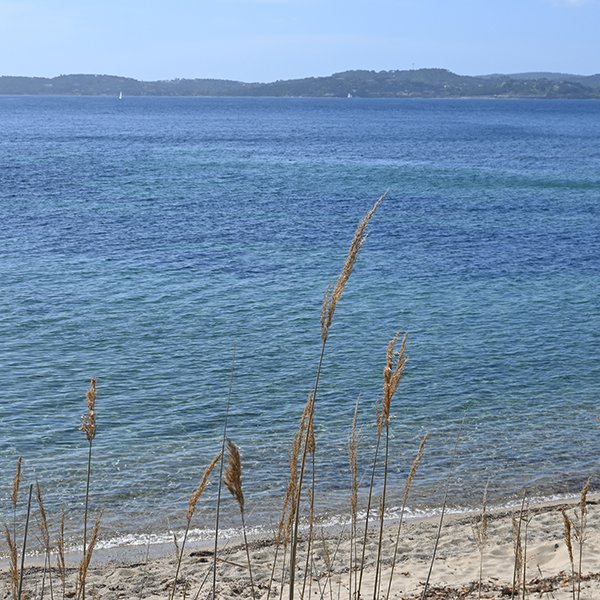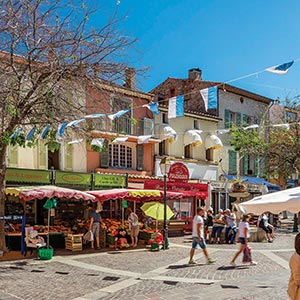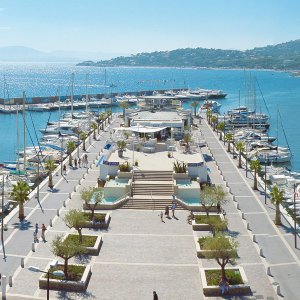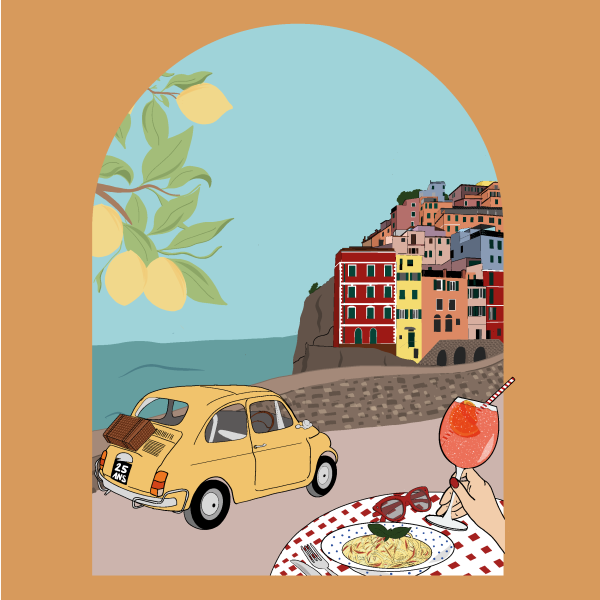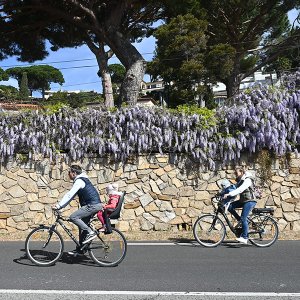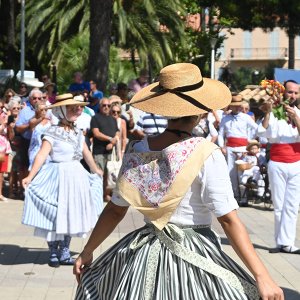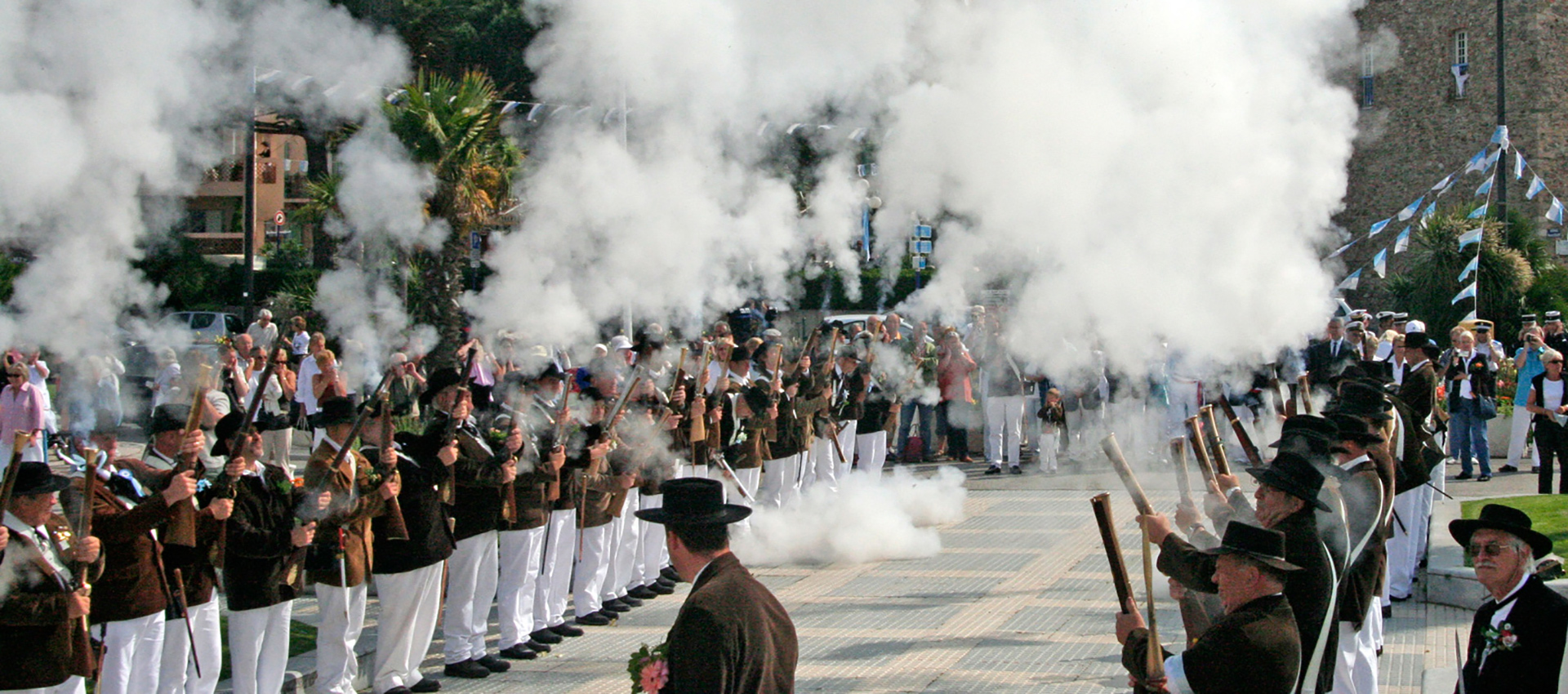Provençal traditions
Proud of its customs, Sainte-Maxime, like all the villages of Provence, cultivates its festivals of the past !!
Often linked to the cycle of the seasons, these festivals were also an opportunity for the village to get together, feast and gather around traditional dances.
What could appear today as folklore is truly lived and felt by the native Provençals and it is with pleasure and emotion that they perpetuate these traditions and popular festivals.
Some important festivals in Sainte-Maxime...
La Fête Votive
Every year, on 14 and 15 May, Sainte-Maxime gathers to pay tribute to the town’s patron saint.
The Saint history
Legend has it the daughter of the Count of Grasse, Lord of Antibes, lived between 650 and 750. She refused wealth and glory in order to completely dedicate herself to God and enter the Saint-Cassien monastery, part of Lérins.
After having taken her vows, the nun quickly becomes a model for the community. It is without a doubt for this reason she was chosen to direct the Callian monastery in which she finished her days following an exemplary life teaching religious virtues.
At her death, she was venerated as a saint in Callian. Since the 11th century, the festival of Sainte-Maxime has been celebrated in the Prieuré’s Chapel which is owned by the monks of Lérins in Sainte-Maxime.

Starting in 1672, after the edification of the Sainte-Maxime parish, the patronal festival is considered with greater solemnity. In 1774, the bishop of Fréjus came to seal the saint’s relics in the base of the bust that is still carried today.
Since, the Sainte-Maxime locals are invited to pay honor to their patron saint during the Votive Festival which is celebrated, each year, on the 14th and 15th of May.
The Votive Festival, is a highly orchestrated procession
It spans over two days. The evening of May 14th, a Major is appointed.
He will direct the bravado and ensure that the procession is carried out safely and without problems. He is the one who orders the shots to be fired with the help of two corporals. The passing of power between the old and new Major is decided in a very solemn manner by the church officials.
The saint is honored with a crown and a colorful scarf from the city by a child from the folkloric group Lei Magnoti and by a child of the bravadeurs.
The 15th of May, the procession begins.
The bust of the Saint, carried by four men, is surrounded by religious and civil authorities, bravadeurs, fifes and drums. The procession is orchestrated in a rigorous manner. Also, the positioning of those composing the cortège remains unchanged. The procession salutes alters composed of flower bouquets and representations of the saint. The procession passes through the streets and alleys of Sainte-Maxime, which are decorated in blue and white for the occasion.
St. John’s Day

The feast of Summer’s Day, is in reality the feast of John the Baptist, on 24 June.
Originally a pagan festival linked to the worship of the sun, it was celebrated before the birth of Christ among the early Slavic peoples to bless the harvest.
The festival was later Christianised and is now celebrated around the world on 24 June, a few days before the summer solstice, to celebrate the light of summer with Midsummer fires.
Every year, Sainte-Maxime celebrates St John’s Day with the folk group Leï Magnoti and the Fifres et Tambours.
It is also often the occasion to have a big ball at the seaside accompanied by fireworks.
St. Peter’s Day
This traditional Provencal festival, which takes place on 29 June, is an opportunity to honour the Patron Saint of fishermen, to maintain the local traditions linked to this profession and to highlight ancestral customs.
The custom allows fishermen to have their boats blessed for the coming year and thus to be protected at sea from any possible disasters. They are wished an abundant catch and a flourishing trade.
On the programme : traditional dances by the folklore group Leï Magnoti and embarrassment of the " Pointu " on the beach in the town centre, followed by a large sardinade proposed by the fishing prud’homie and the town of Sainte-Maxime.
